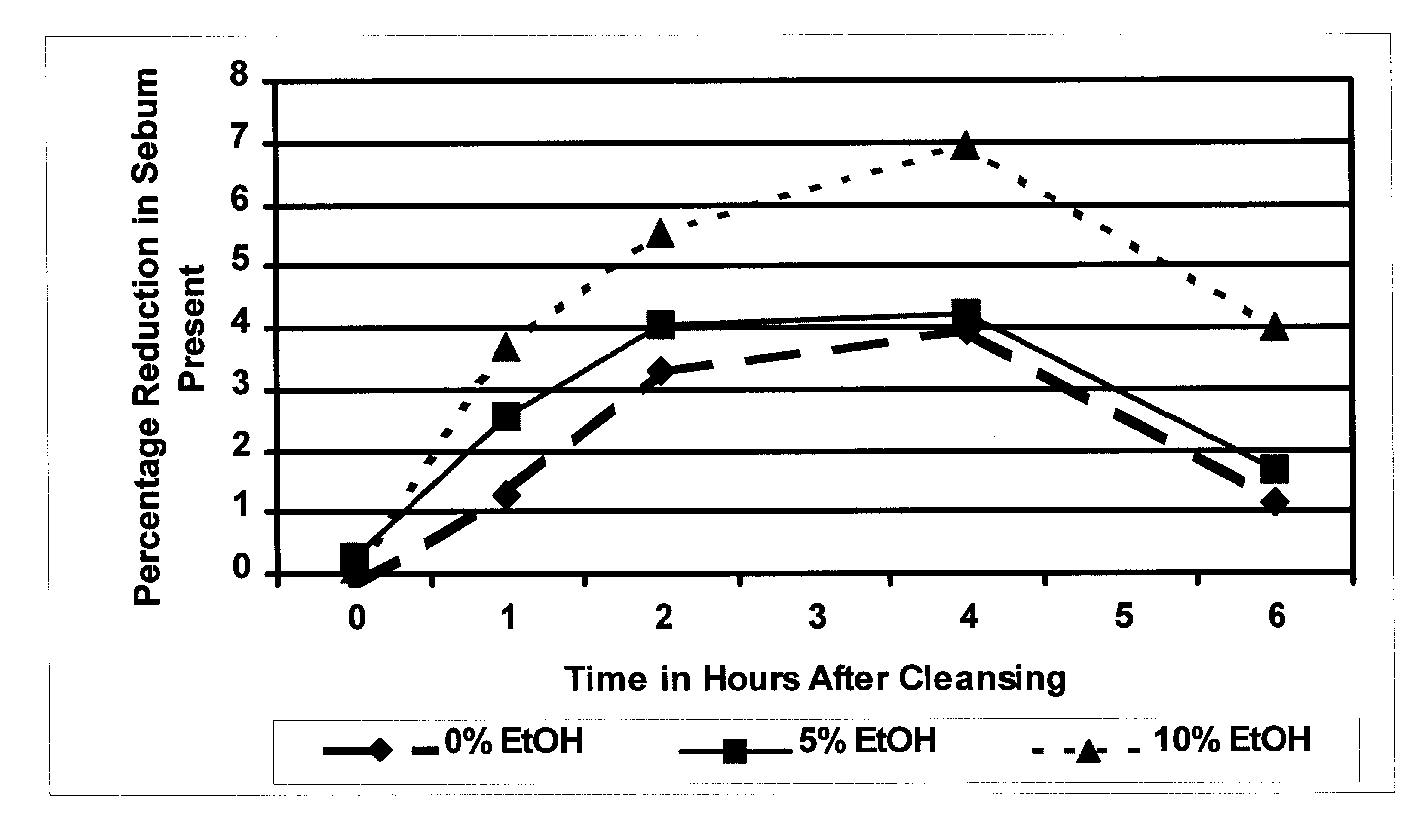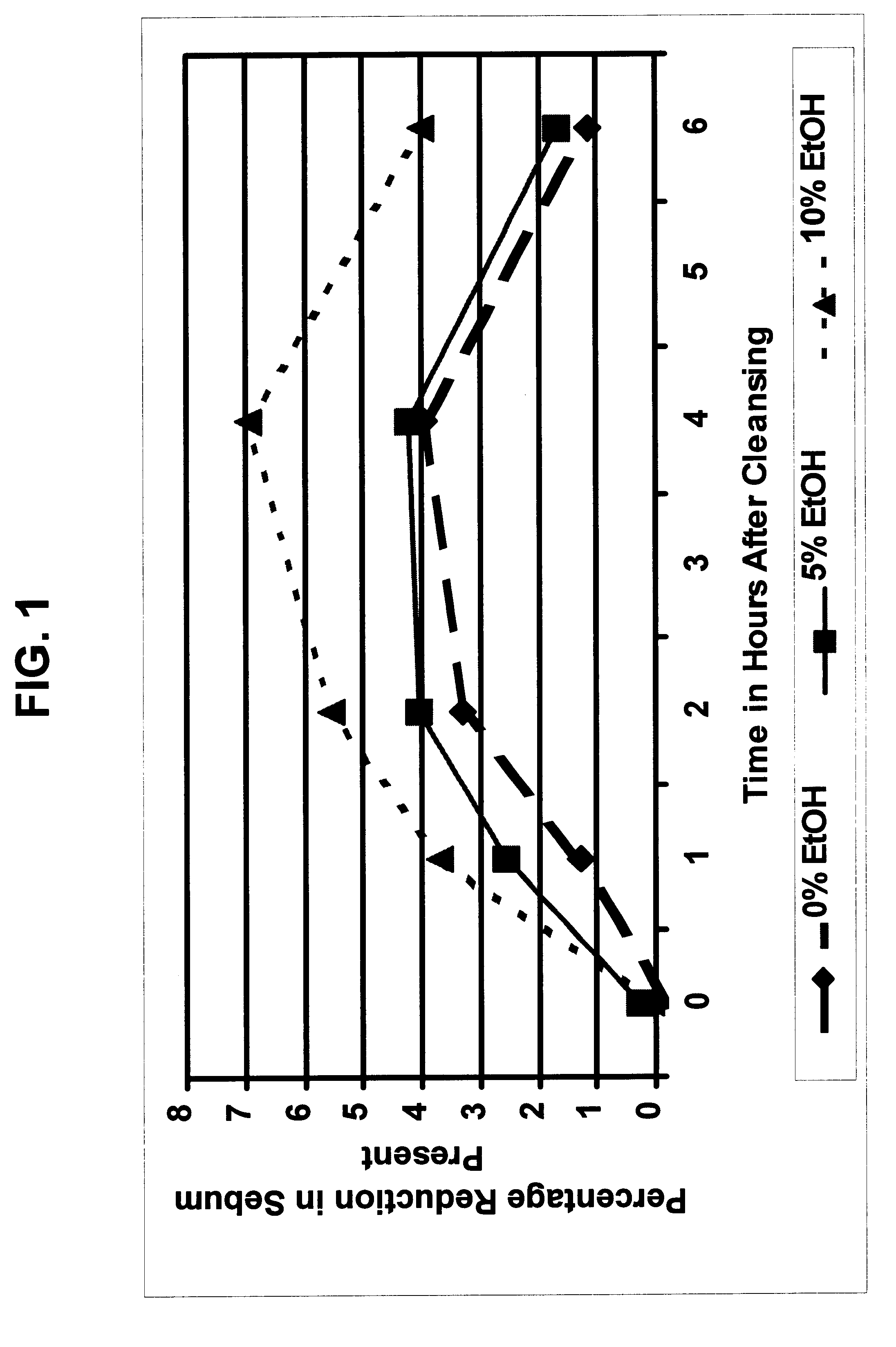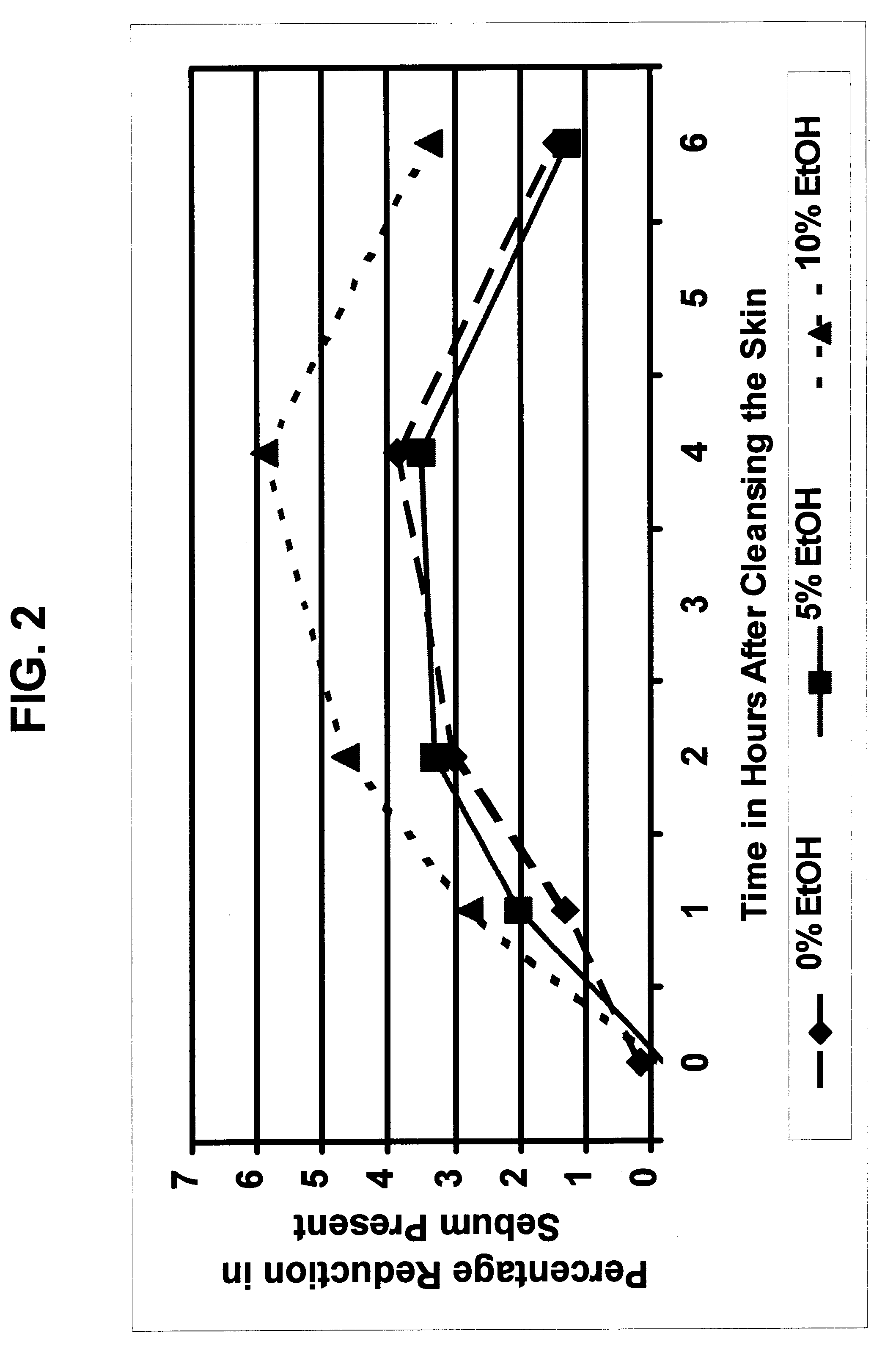Topical treatment for oily skin
a technology for oily skin and topical treatment, which is applied in the direction of drug composition, aerosol delivery, synthetic polymeric active ingredients, etc., can solve the problems of no such ready treatment for oily skin, only temporary relief from oiliness, and generation of free fatty acids
- Summary
- Abstract
- Description
- Claims
- Application Information
AI Technical Summary
Benefits of technology
Problems solved by technology
Method used
Image
Examples
specific examples
Example 1
Methods for Evaluating Products Capable of Reducing Sebum on the Skin
As reviewed by Ayres, there are a variety of methods published through which products can be evaluated for their ability to reduce sebum output (Ayres, J. D. In Aust, L. B., ed. Cosmetic Claims Substantiation, Cosmetic Science and Technology Series, Volume 18. New York: Marcel Dekker, 1998:115-130). The most accurate and effective means of measuring the amount of sebum on the surface of the skin is through the use of Sebutape (Kligman, A. M. In: Montagna, W., Ellis, R. A., and Silver, A. F., eds. Advances in Biology of Skin:The Sebaceous Glands, Oxford, England: Pergamon Press, 1963: 110-124; Agache, P. G. In:Zviak, C., ed. The Science of Hair Care. New York: Marcel Dekker, 1986: 469-500; Ayres, J. D. In: Aust, L. B., ed. Cosmetic Claims Substantiation, Cosmetic Science and Technology Series, Volume 18. New York: Marcel Dekker, 1998:115-130). Sebutape is a microporous, hydrophobic, self-adhering polymeric ...
example 2
Results of Initial Testing: A Complete Formulation
The formula for a test product used in this procedure described in Example 1 is shown below in Table 1.
Sebum on the untreated skin of the test subjects was measured with Sebutape on Day 1. The pooled test results for the treated (average 73.22.+-.3.296, range 70.42-78.04) ) and untreated (73.51.+-.2.846, range 70.05-77.19) sites prior to cleansing are not statistically different at the 95% confidence interval. A matched-pairs evaluation of these same results was also conducted. The results were not statistically different as determined by this statistical evaluation method. This data demonstrates that for each test subject, the two sides of the forehead had the same amount of sebum present, and thus no bias is inherently present prior to the application of the test formulation.
An experiment was then conducted in which the test formulation (see Table 1) was applied to the treatment site on the forehead. The presence of sebum was measu...
example 3
Partial Formulation Compositions for Comparative Analysis
The active components of the formula listed in Table 1 are SD Alcohol 40-B (ethyl alcohol), Pyridoxine Hydrochloride (Vitamin B.sub.6), and Zinc Gluconate. In order to demonstrate that these components have a definite effect upon the amount of sebum present on the skin, seven separate formulations were made up and tested in the test procedure described above. These partial formulations are listed in Table 5.
PUM
| Property | Measurement | Unit |
|---|---|---|
| Fraction | aaaaa | aaaaa |
| Fraction | aaaaa | aaaaa |
| Fraction | aaaaa | aaaaa |
Abstract
Description
Claims
Application Information
 Login to View More
Login to View More - R&D
- Intellectual Property
- Life Sciences
- Materials
- Tech Scout
- Unparalleled Data Quality
- Higher Quality Content
- 60% Fewer Hallucinations
Browse by: Latest US Patents, China's latest patents, Technical Efficacy Thesaurus, Application Domain, Technology Topic, Popular Technical Reports.
© 2025 PatSnap. All rights reserved.Legal|Privacy policy|Modern Slavery Act Transparency Statement|Sitemap|About US| Contact US: help@patsnap.com



